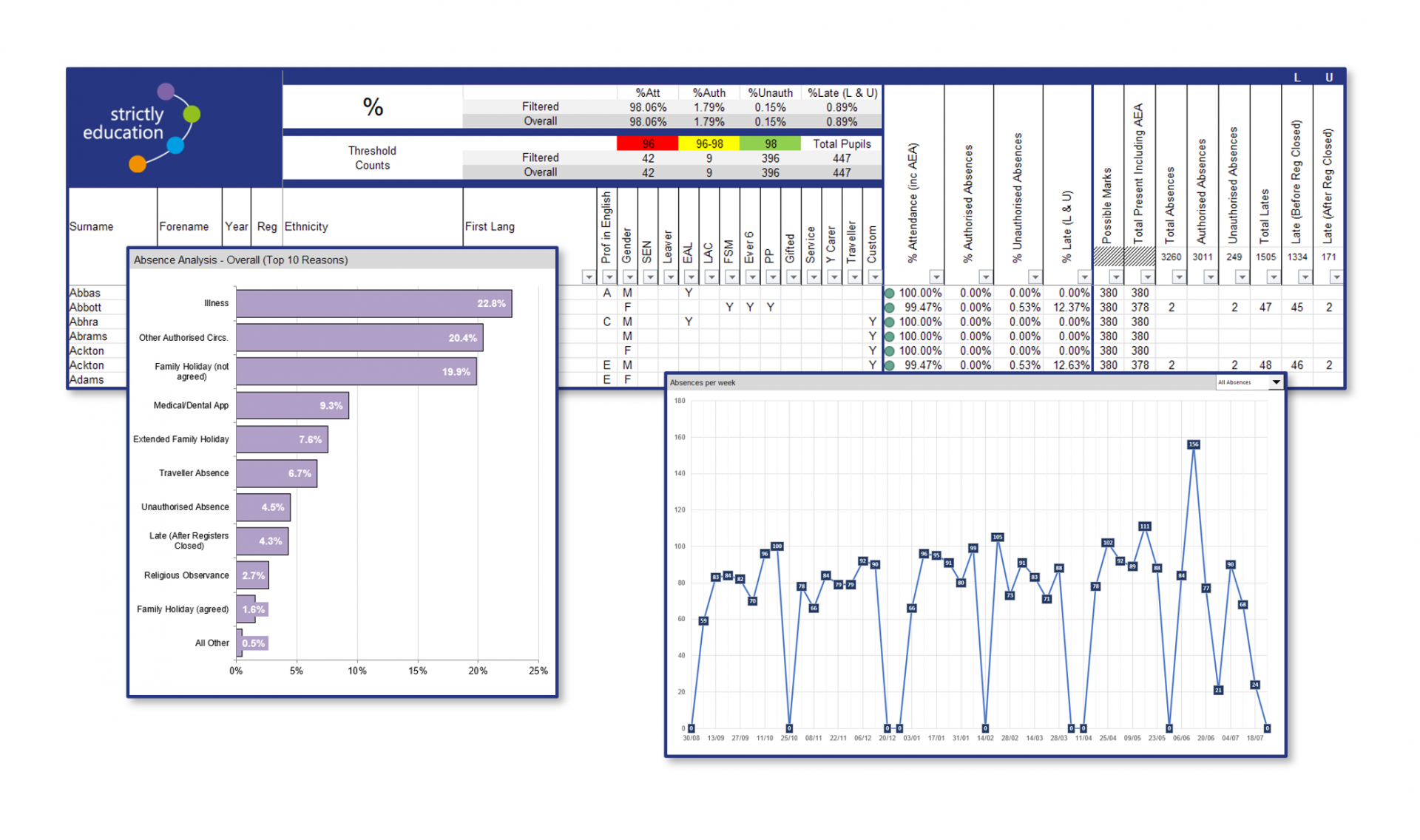Pupil Absence: The Consequences of Poor Attendance Levels
The effects on school community and overall achievement when attendance levels are falling.
In recent years, pupil absence has emerged as a growing concern. Poor attendance levels have far-reaching consequences for both individual learners and society as a whole. By highlighting the significant consequences it has on students, their educational outcomes, and wider society and in understanding the implications of poor attendance, we can work towards effective strategies and interventions to address this issue and ensure that all students have access to quality education.

Causes of Pupil Absence
Several factors contribute to pupil absence in schools. Health-related issues, including illness and mental health problems are major contributors to absenteeism. Frequent illnesses or chronic conditions can disrupt regular attendance, hindering pupils' progress and academic achievements. Additionally, issues such as bullying, lack of engagement, and low motivation may lead students to avoid school altogether.
Furthermore, socioeconomic factors play a role in pupil absence. Children from disadvantaged backgrounds often face multiple barriers to attendance, including limited access to resources, unstable housing situations, or caring responsibilities within their families. Financial constraints can also result in students missing school due to the inability to afford necessary supplies, uniforms, or transportation.
Consequences on Educational Outcomes
Poor attendance levels have severe consequences on educational outcomes for individual learners. Regular school attendance is crucial for acquiring knowledge, developing skills, and building relationships with peers as well as teachers. Students with high absence rates are at a significant disadvantage, as they miss out on valuable learning opportunities.
Academically, poor attendance hampers students' progress and leads to gaps in their knowledge. When students are absent, they miss vital explanations, demonstrations, and collaborative activities that enhance understanding. As a result, their learning suffers, leading to lower academic achievement and reduced confidence in their abilities.
Moreover, attendance is closely linked to examination results and future prospects. Poor attendance could negatively impact students' performance in exams, limiting their opportunities for higher education and future employment. Educational institutions and employers often consider attendance records as a reflection of an individual's commitment, reliability, and discipline.
Consequences for Social Development
Beyond the academic realm, poor attendance also has detrimental effects on students' social and emotional development. School is a place for interaction with peers, fostering social skills, teamwork, and an environment that provides emotional wellbeing support. Regular attendance allows students to form friendships, engage in extracurricular activities, and develop a sense of belonging within their school community.
However, frequent absences isolate students from these important interactions, potentially leading to feelings of loneliness, detachment, and low self-esteem. They may struggle to build supportive relationships with peers and miss out on the emotional support that school environments can provide. As a result, students who are frequently absent may experience difficulties in their social development, impacting their overall well-being.
Wider Issues
The consequences of poor attendance levels extend beyond the individual student and have far-reaching implications in general. High rates of pupil absence put a strain on educational institutions and teachers, as they must constantly address the challenges posed by students who are frequently absent. This diverts valuable time and resources away from effective teaching and learning. Students who frequently miss school are more likely to experience lower educational attainment, leading to limited opportunities and reduced social mobility.
Helping Schools Identify Issues Early
Strictly Education provides hundreds of schools with a suite of analysis reports that take the data from SIMS and transforms all the information into an easily understandable report with charts and visuals that can help pinpoint patterns and reasons for low attendance. The Pupil Attendance report is just £165 per year and a full suite of reports that make your SIMS data easy to understand is only £360 – which includes behaviour, achievement and staff absence.

With our suite of analysis reports, we enable you to channel your efforts into promoting pupil wellbeing, reducing any barriers to attendance, and to foster a supportive school environment. By prioritising regular attendance and implementing targeted interventions, you can ensure better access to education, empowering pupils to reach their full potential.
Free Webinar
Join us at 2.00pm on 22nd of June for a free webinar that explores how to improve attendance levels with techniques that include analysis reports.
By the close of this webinar, you will have:
- Increased your understanding of attendance, assessment and behaviour management challenges and the impact on your school
- Learned how to overcome those challenges with tips and school improvement techniques
- Discovered how to use a suite of analysis reports to support your school in achieving improvements
Want to buy the Pupil Attendance Report or the full three-report package that includes Pupil Attendance and Staff Absence? Call us on 0330 123 2549 or email enquire@strictlyeducation.co.uk we are happy to answer your questions.

_1980.png)


_250.jpg)




